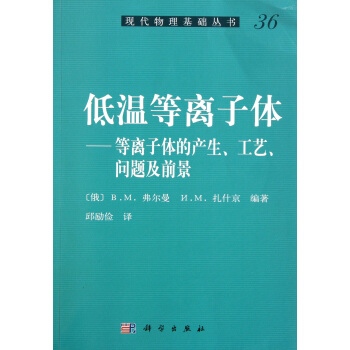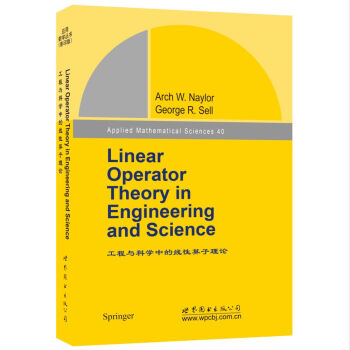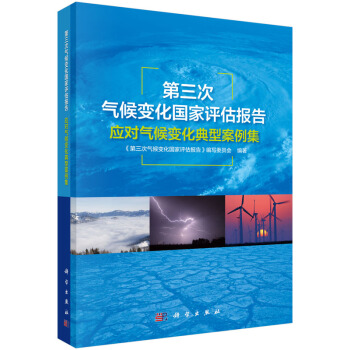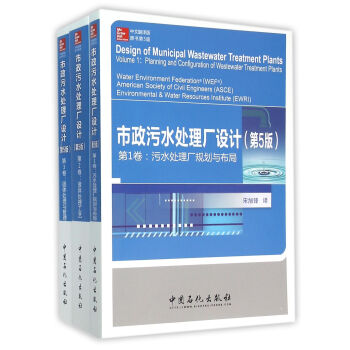![纯粹数学与应用数学专著:随机动力系统导论(英文) [An Introduction to Stochastic Dynamics]](https://pic.windowsfront.com/11682525/554c2f29Naf0f46bd.jpg)

具体描述
内容简介
随机动力系统是一个入门较难的新兴领域。《纯粹数学与应用数学专著:随机动力系统导论(英文)》是这个领域的一个较为通俗易懂的引论。
在《纯粹数学与应用数学专著:随机动力系统导论(英文)》的第一部分,作者从简单的随机动力系统实际例子出发,引导读者回顾概率论和白噪声的基本知识,深入浅出地介绍随机微积分,然后自然地展开随机微分方程的讨论。
目录
Chapter 1 Introduction1.1 Examples of deterministic dynamical systems
1.2 Examples of stochastic dynamical systems
1.3 Mathematical modeling with stochastic differential equations
1.4 Outline of this book
1.5 Problems
Chapter 2 Background in Analysis and Probability
2.1 Euclidean space
2.2 Hilbert, Banach and metric spaces
2.3 Taylor expansions
2.4 Improper integrals and Cauchy principal values
2.5 Some useful inequalities
2.5.1 Young's inequality
2.5.2 Cronwall inequality
2.5.3 Cauchy-Schwaxz inequality
2.5.4 HSlder inequality
2.5.5 Minkowski inequality
2.6 HSlder spaces, Sobolev spaces and related inequalities
2.7 Probability spaces
2.7.1 Scalar random variables
2.7.2 Random vectors
2.7.3 Gaussian random variables
2.7.4 Non-Gaussian random variables
2.8 Stochastic processes
2.9 Coovergence concepts
2.10 Simulation
2.11 Problems
Chapter 3 Noise
3.1 Brownian motion
3.1.1 Brownian motion in R1
3.1.2 Brownian motion in Rn~
3.2 What is Gaussian white noise
3.3* A mathematical model for Gaussian white noise
3.3.1 Generalized derivatives
3.3.2 Gaussian white noise
3.4 Simulation
3.5 Problems
Chapter 4 A Crash Course in Stochastic Differential Equations
4.1 Differential equations with noise
4.2 Riemann-Stieltjes integration
4.3 Stochastic integration and stochastic differential equations
4.3.1 Motivation
4.3.2 Definition of It5 integral
4.3.3 Practical calculations
4.3.4 Stratonovich integral
4.3.5 Examples
4.3.6 Properties of It6 integrals
4.3.7 Stochastic differential equations
4.3.8 SDEs in engineering and science literature
4.3.9 SDEs with two-sided Brownian motions
4.4 It's formula
4.4.1 Motivation for stochasticChain rules
4.4.2 ItS's formula in scalar case
4.4.3 It6's formula in vector case
4.4.4 Stochastic product rule and integration by parts
4.5 Linear stochastic differential equations
4.6 Nonlinear stochastic differential equations
4.6.1 Existence, uniqueness and smoothness
4.6.2 Probability measure px and expectation Ex associated with an SDE
4.7 Conversion between It5 and Stratonovich stochastic differential equations
4.7.1 Scalar SDEs
4.7.2 SDE systems
4.8 Impact of noise on dynamics
4.9 Simulation
4.10 Problems
Chapter 5 Deterministic Quantities for Stochastic Dynamics
5.1 Moments
5.2 Probability density functions
5.2.1 Scalar Fokker-Planck equations
5.2.2 Multidimensional Fokker-Planck equations
5.2.3 Existence and uniqueness for Fokker-Planck equations
5.2.4 Likelihood for transitions between different dynamical regimes under uncertainty
5.3 Most probable phase portraits
5.3.1 Mean phase portraits
5.3.2 Almost sure phase portraits
5.3.3 Most probable phase portraits
5.4 Mean exit time
5.5 Escape probability
5.6 Problems
Chapter 6 Invariant Structures for Stochastic Dynamics
6.1 Deterministic dynamical systems
6.1.1 Concepts for deterministic dynamical systems
6.1.2 The Haxtman-Grobman theorem
6.1.3 Invariant sets
6.1.4 Differentiable manifolds
6.1.5 Deterministic invariant manifolds
6.2 Measurable dynamical systems
6.3 Random dynamical systems
6.3.1 Canonical sample spaces for SDEs
6.3.2 Wiener shift
6.3.3 Cocycles and random dynamical systems
6.3.4 Examples of cocycles
6.3.5 Structural stability and stationary orbits
6.4 Linear stochastic dynamics
6.4.1 Oseledets' multiplicative ergodic theorem and Lyapunov exponents"
6.4.2 A stochastic Hartman-Grobman theorem
6.5* Random invariant manifolds
6.5.1 Definition of random invariant manifolds
6.5.2 Converting SDEs to RDEs
6.5.3 Local random pseudo-stable and pseudo-unstable manifolds
6.5.4 Local random stable, unstable and center manifolds
6.6 Problems
Chapter 7 Dynamical Systems Driven by Non-Gaussian Levy Motions
7.1 Modeling via stochastic differential equations with Levy motions
7.2 Levy motions
7.2.1 Functions that have one-side limits
7.2.2 Levy-Ito decomposition
7.2.3 Levy-Khintchine formula
7.2.4 Basic properties of Levy motions
7.3 s-stable Levy motions
7.3.1 Stable random variables
7.3.2 a-stable Levy motions in R1
7.3.3 a-stable Levy motion in Rn
7.4 Stochastic differential equations with Levy motions
7.4.1 Stochastic integration with respect to Levy motions
7.4.2 SDEs with Levy motions
7.4.3 Generators for SDEs with Levy motion
7.5 Mean exit time
7.5.1 Mean exit time for a-stable Levy motion
7.5.2 Mean exit time for SDEs with a-stable Levy motion
7.6 Escape probability and transition phenomena
7.6.1 Balayage-Dirichlet problem for escape probability
7.6.2 Escape probability for a-stable Levy motion
7.6.3 Escape probability for SDEs with a-stable Levy motion
7.7 Fokker-Planck equations
7.7.1 Fokker-Planck equations in R1
7.7.2 Fokker-Planck equations in Rn
7.8 Problems
Hints and Solutions
Further Readings
References
Index
Color Pictures
精彩书摘
《纯粹数学与应用数学专著:随机动力系统导论(英文)》:Chapter 1
Introduction
Noisy fluctuations are abundant in complex systems. In some cases, noise is not negligible, whereas in some other situations, noise could even be beneficial. It is desirable to have a better understanding of the impact of noise on dynamical evo?lution of complex systems. In other words, it becomes crucial to take randomness into account in mathematical modeling of complex phenomena under uncertainty.
In 1908, Langevin devised a stochastic differential equation for the motion of Brownian particles in a fluid, under random impacts of surrounding fluid molecules. This stochastic differential equation, although important for understanding Brownian motion, went largely unnoticed in the mathematical community until after stochastic calculus emerged in the late 1940s. Introductory books on stochastic differential equations (SDEs) include [8,88,213].
The goal for this book is to examine and present select dynamical systems concepts, tools, and methods for understanding solutions of SDEs. To this end, we also need basic information about deterministic dynamical systems modeled by ordinary differential equations (ODEs), as presented in the first couple of chapters in one of the references [110,290].
In this introductory chapter, we present a few examples of deterministic and stochastic dynamical systems, then briefly outline the contents of this book.
1.1 Examples of deterministic dynamical systems
We recall a few examples of deterministic dynamical systems, where short time-scale forcing and nonlinearity can affect dynamics in a profound way.
Example 1.1 A double-well system.
Consider a one-dimensional dynamical system x = x - x3. It has three equilib?rium states, -1,0 and 1,at which the vector field x - x3 is zero. Observe that
Note that x = x - x3 = -4,where the potential function V(x) = -gx2 + ^x4 has two minimal values (sometimes called “wells”),see Figure 1.1.
Figure 1.1 Plot of
A solution curve, or orbit, or trajectory, starting with x(0) = xo in (-1,0), decreases in time (because 士 < 0 on this interval) and approaches the equilibrium state - 1 as t ^ +oo, whereas an orbit starting with x(0) = xo in (-oo, -1), increases in time (because x > 0 on this interval) and approaches the equilibrium state - 1 as t +oo. Thus the equilibrium point {-1} is a stable equilibrium state and it is an attractor, i.e., it attracts nearby orbits. Likewise {1} is also an attractor. But the equilibrium state {0} is unstable and is called an repeller. See Figure 1.2 for a few representative solutions curves.
An orbit starting near one equilibrium state {-1} can not go anywhere near the other equilibrium state {1}, and vice versa. There is no transition between these two stable states.
If we only look at the solution curves in the state space, E1, wherestate xlives,
we get a state portrait, or as often called, a phase portrait.
……
前言/序言
用户评价
在我看来,数学书籍的价值很大程度上体现在其能够激发读者的进一步探索欲望。《An Introduction to Stochastic Dynamics》的英文原版信息,让我联想到西方学术界在数学研究上的深度和广度。通常,英文原版的数学专著在理论的完备性和前沿性的把握上有着天然的优势,它们往往能更及时地反映最新的研究成果和发展趋势。我猜想,这本书的作者们一定在相关领域有着深厚的积累,并能够将这些宝贵的知识以一种有条理、有逻辑的方式呈现出来。我期待在阅读过程中,能够感受到作者们对这个课题的热情,并从中学习到分析和解决复杂问题的方法论。即使书中某些部分的内容我暂时无法完全理解,但只要它能够在我脑海中播下思考的种子,让我对接下来的学习方向有更清晰的规划,那么这本书就已然非常有价值了。
评分对于一本涉及“随机动力系统”的著作,我自然会对其在实际应用方面的阐述非常感兴趣。《纯粹数学与应用数学专著》这个系列名也进一步加强了我的这一预期。我好奇这本书会选择哪些具体的应用领域来展开论述,例如,是侧重于物理学中的布朗运动和噪声驱动的系统,还是金融学中的期权定价模型,亦或是生物学中的种群动态或神经科学中的信号传播?不同的应用场景往往需要对随机动力系统进行不同的数学建模和分析,我希望这本书能够提供一些具有代表性的例子,并且在必要时,展示如何将抽象的数学理论与具体的现实问题联系起来。一本优秀的导论性书籍,不应该仅仅停留在理论的层面,而应该能够让读者看到数学工具的强大生命力,并启发他们思考如何在自己的研究领域中应用这些工具。
评分作为一名对数学充满好奇的学习者,我一直在寻找能够清晰阐述复杂概念的书籍,尤其是那些能带我深入了解现代数学前沿的著作。《纯粹数学与应用数学专著:随机动力系统导论(英文)》这个书名本身就吸引了我,它暗示着这本书既有严谨的理论基础,又能触及到实际应用,这正是我所追求的。虽然我还没有机会深入阅读这本书,但我从它的标题和所属的丛书系列(纯粹数学与应用数学专著)就能预感到,它应该是一部精心打磨、内容扎实的学术著作。通常这类专著会为读者提供一个系统性的框架,从基础概念开始,逐步引入更高级的主题,并且很可能包含一些经过精心挑选的范例和练习,以帮助读者巩固理解。我特别期待它在“随机动力系统”这个领域能够提供怎样的视角,这个方向在物理、生物、金融等多个领域都有着极其重要的应用,所以我相信这本书会为我打开一扇通往这些交叉领域的大门。
评分作为一名渴望提升自己数学能力的读者,我一直在寻找能够提供系统性学习路径的书籍。《An Introduction to Stochastic Dynamics》这个书名,让我对其内容的结构和深度产生了浓厚的兴趣。我设想,这本书很可能从基础的概率论和随机过程概念讲起,然后逐步过渡到动力系统的基本理论,最终将两者结合,深入探讨随机动力系统的核心问题。我期待作者能够为读者提供清晰的数学定义、严谨的定理证明,以及一系列精心设计的例题,这些都是帮助我理解和掌握复杂数学概念的关键。此外,一本优秀的专著还应该能够指导读者如何进行进一步的阅读和研究,也许书中会提供一些参考文献列表,或者指出当前的研究热点和尚未解决的问题,这些信息对我未来的学术发展将至关重要。
评分从我个人的学习经历来看,一本好的数学教材往往需要作者在内容的组织和讲解方式上花费巨大的心思。《An Introduction to Stochastic Dynamics》的副标题“导论”让我对它的可读性抱有很高的期望。这意味着它应该不是一本只为顶尖专家准备的著作,而是能让那些具备一定数学基础,但对随机动力系统还不甚了解的研究者或学生能够循序渐进地掌握相关知识。我尤其关注作者是如何处理数学的严谨性和直观性之间的平衡的。有时候,过度的抽象会让初学者望而却步,而过于简化的论述又可能丢失数学的精髓。我希望这本书能够在这方面做得出色,用清晰的语言、恰当的例子,甚至可能辅以图示,来帮助读者建立对随机过程、微分方程以及它们如何结合形成动力系统的直观认识,并逐步理解其内在的数学结构。
相关图书
本站所有内容均为互联网搜索引擎提供的公开搜索信息,本站不存储任何数据与内容,任何内容与数据均与本站无关,如有需要请联系相关搜索引擎包括但不限于百度,google,bing,sogou 等,本站所有链接都为正版商品购买链接。
© 2026 windowsfront.com All Rights Reserved. 静流书站 版权所有






![微机电耦合动力学 [Coupled Dynamics of MEMS] pdf epub mobi 电子书 下载](https://pic.windowsfront.com/11734345/55c2bd50N7f860d15.jpg)
![理论物理的数学原理(英文版) [Mathematical Principles of Theoretical Physics] pdf epub mobi 电子书 下载](https://pic.windowsfront.com/11749015/55caf7daN3b21478a.jpg)

![数量性状遗传分析 [Genetic Analysis of Quantitative Traits] pdf epub mobi 电子书 下载](https://pic.windowsfront.com/11768632/565568dfN95bd60d3.jpg)









![工程电磁场(第2版) [Engineering Electromagnetic Fields] pdf epub mobi 电子书 下载](https://pic.windowsfront.com/11867092/56a71cd4N24da876a.jpg)
